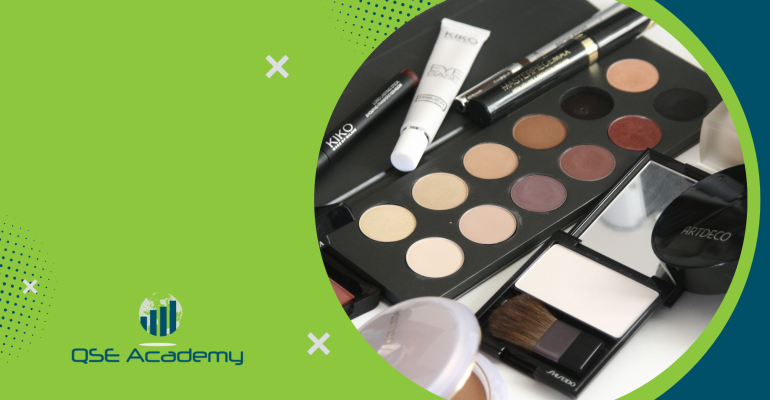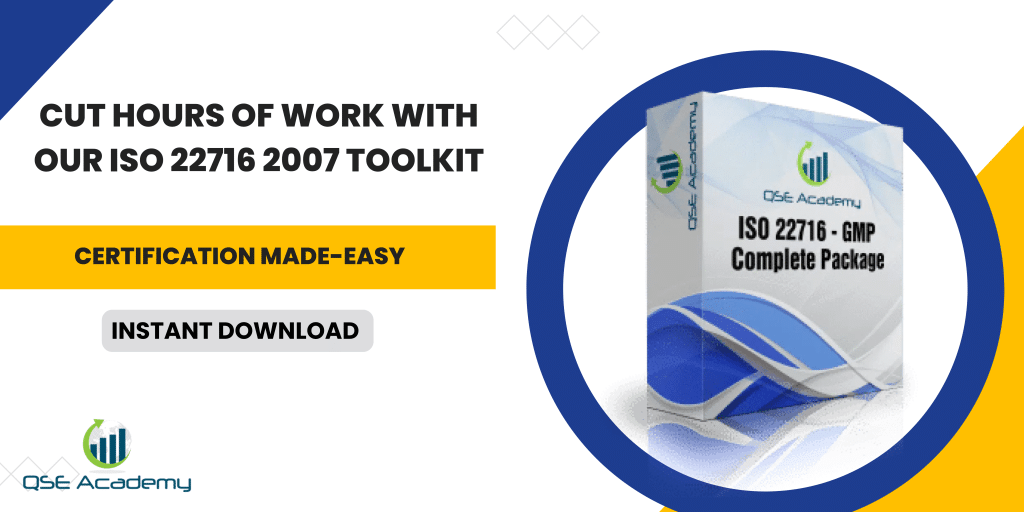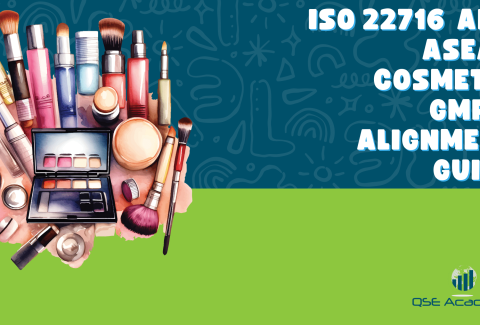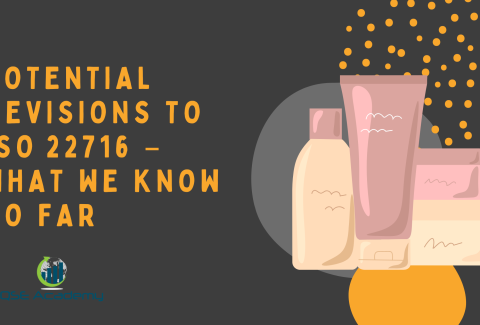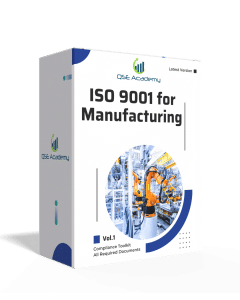ISO 22716 Certification Explained
Last Updated on October 24, 2025 by Hafsa J.
Overview of ISO 22716 Certification
Let’s talk about something you might not immediately associate with cosmetics—quality management. Ever wondered how your favorite skincare cream or shampoo is made so consistently and safely? That’s where ISO 22716 Certification comes in.
ISO 22716 is a set of guidelines specifically tailored for the cosmetic industry. It’s all about ensuring that products are manufactured in a way that prioritizes quality, safety, and compliance.
It’s like having a foolproof recipe for your favorite dish—only here, the dish is a moisturizer or lipstick, and the stakes are much higher because these products go directly on your skin!
Now, I know “ISO” might sound intimidating (International Organization for Standardization—doesn’t exactly roll off the tongue, does it?).
But at its core, ISO 22716 is a practical roadmap for good manufacturing practices (GMP) in cosmetics. It’s designed to keep products safe for consumers while making life easier for manufacturers.
Importance of ISO 22716 in the Cosmetic Industry
Why does this matter? Well, let me ask you this: Have you ever had a bad reaction to a cosmetic product? Or heard of a product recall? Scenarios like these usually stem from gaps in quality control during production.
ISO 22716 certification helps businesses avoid such headaches by providing a clear framework for manufacturing processes.
For example, imagine you’re running a small cosmetic brand. You’ve nailed your product formula—everyone loves it! But then, a batch comes out slightly off in color or consistency.
Customers notice, and complaints start pouring in. ISO 22716 certification prevents these hiccups by ensuring every step of your production process is standardized—from sourcing ingredients to packaging.
Here’s a fun fact: In many countries, ISO 22716 isn’t just a “nice-to-have”; it’s a legal requirement for companies looking to export their products. It’s like having a passport for your cosmetics to travel the world.
Does that sound familiar? Maybe you’ve faced challenges scaling up production or ensuring consistency in your batches.
ISO 22716 can be your safety net—it provides structure and reliability, no matter how big or small your operations are.
Let’s dive deeper into what ISO 22716 certification covers and why it’s a game-changer for cosmetic businesses. Ready to explore?
Understanding ISO 22716 Certification
What is ISO 22716?
ISO 22716 is a guideline for Good Manufacturing Practices (GMP) tailored to the cosmetic industry. It ensures that products are made, stored, and shipped with consistent quality and safety. Think of it as a checklist to avoid mistakes and maintain high standards.
For example, it covers everything from how ingredients are sourced to how the final product is packaged. If you’ve ever wondered how cosmetic brands keep their products so consistent, this is the secret sauce.
Key Principles of ISO 22716
1. Organization and Management
Clear roles are essential. Who handles quality checks? Who oversees production? Everyone knows their part, so nothing slips through the cracks.
2. Premises and Equipment
Facilities and tools must be clean and well-maintained to prevent contamination. Think of it like a spotless kitchen for making your favorite meal.
3. Raw Materials and Packaging
From ingredients to packaging, everything is handled and stored to maintain quality. For example, storing raw materials at the right temperature avoids spoilage.
4. Production Control
Processes are monitored step by step to catch issues early. If a cream’s texture is off, it’s fixed before it leaves the factory.
5. Storage and Distribution
Products are stored and transported to stay safe and effective—no melted lipstick or separated lotion here.
6. Traceability
Every batch is tracked. If something goes wrong, you can pinpoint the issue and fix it quickly.
7. Continuous Improvement
There’s always room to grow. ISO 22716 encourages regularly reviewing processes to keep getting better.
These principles ensure products are safe, reliable, and consistent, building customer trust. Does that sound like something your business could use?
The Process of Obtaining ISO 22716 Certification
Getting certified may seem daunting, but it’s a clear and structured process. Here’s a breakdown:
1. Understand the Requirements
First, familiarize yourself with ISO 22716 guidelines. They outline the Good Manufacturing Practices (GMP) you’ll need to follow. This might involve some reading, but it’s worth it—think of it as your roadmap.
2. Gap Analysis
Assess your current processes against ISO 22716 requirements. Are there areas where you fall short? For example, maybe your documentation isn’t as thorough as it should be, or your storage practices need improvement.
3. Implement Changes
Address the gaps you found during your analysis. This could involve training your team, upgrading equipment, or improving record-keeping. Think of it as a tune-up for your business.
4. Internal Audit
Before inviting a certification body, conduct an internal audit to ensure everything’s in place. This is like rehearsing for a big presentation—you want to catch mistakes before it’s showtime.
5. Choose a Certification Body
Select an accredited organization to conduct your external audit. Make sure they’re experienced in ISO 22716 certification and understand your industry.
6. External Audit
The certification body will review your processes, documentation, and compliance with ISO 22716. If all goes well, you’ll receive your certification. If there are issues, they’ll guide you on how to fix them.
Common Requirements and Documentation
ISO 22716 certification requires a strong focus on organization and documentation. Here are some common elements you’ll need:
1. Standard Operating Procedures (SOPs)
Detailed SOPs for everything from raw material handling to cleaning schedules. These ensure consistency and safety in daily operations.
2. Training Records
Documentation that shows your team is trained in GMP and understands their roles. For example, records of workshops or on-the-job training sessions.
3. Batch Records
Comprehensive records for each batch produced. This includes raw materials used, production steps, and quality checks—essential for traceability.
4. Cleaning Logs
Proof that your premises and equipment are cleaned and maintained regularly.
5. Supplier and Material Documentation
Records of approved suppliers, material specifications, and certificates of analysis to ensure quality inputs.
The process might seem detailed, but it ensures your products are safe, consistent, and trusted by consumers. Once certified, your business stands out as a reliable player in the cosmetic industry.
Does this sound like something you can tackle? If not, remember, that every step you take gets you closer to a more robust and trusted operation!
Benefits of ISO 22716 Certification
Ensuring Quality and Safety
Let’s start with the big one—quality and safety. When your business follows ISO 22716 guidelines, you’re building a strong foundation for producing consistent, high-quality products.
For example, have you ever bought a product that felt different from batch to batch? Maybe one bottle of shampoo lathered perfectly, but the next didn’t. With ISO 22716, that inconsistency is virtually eliminated. Your processes are standardized, meaning every product meets the same high standard.
This isn’t just about satisfying customers; it’s also about keeping them safe. ISO 22716 certification ensures raw materials, production methods, and packaging all meet strict safety criteria. By following these guidelines, you reduce the risk of contamination, defective products, or recalls—a huge win for both your brand and your bottom line.
Enhancing Business Credibility
Trust is everything in the cosmetic industry. When your business is ISO 22716 certified, it sends a clear message: “We care about quality and safety.”
This certification isn’t just a badge for your website—it’s a globally recognized standard. It opens doors to new markets, especially if you’re looking to expand internationally.
Many countries require ISO 22716 certification for imported cosmetics, so certification can be your ticket to global business.
It also gives you an edge over competitors. Imagine a customer choosing between two brands: one certified and one not.
Which would they trust more?
Finally, certification boosts trust with your partners—whether it’s suppliers, retailers, or distributors.
They know they’re working with a brand that takes quality seriously, which can lead to stronger, longer-lasting business relationships.
At the end of the day, ISO 22716 isn’t just about compliance; it’s about building a reliable, credible, and safe brand.
Customers notice, partners notice, and your business grows because of it.
So, does this sound like something your business could benefit from?
Challenges and Solutions in ISO 22716 Compliance
When working toward ISO 22716 certification, challenges are inevitable. Here are a few common ones businesses face:
1. Inadequate Documentation
Keeping thorough records is a cornerstone of ISO 22716, but many businesses find this overwhelming. Missing or incomplete documentation can create major compliance gaps.
2. Lack of Staff Training
Your team plays a critical role in compliance, but if they’re not properly trained in Good Manufacturing Practices (GMP), mistakes can creep in.
3. Facility Limitations
Not all production spaces meet ISO 22716 requirements. Issues like improper storage conditions or poorly maintained equipment can derail compliance efforts.
4. Supplier Management
Ensuring suppliers meet quality standards can be tricky, especially if your sourcing process isn’t well-defined.
5. Resistance to Change
Implementing new processes and systems often meets resistance from employees or management. Change is hard, and old habits can be tough to break.
Practical Tips for Overcoming Challenges
1. Streamline Documentation
Simplify your approach to record-keeping. Use templates for batch records, cleaning logs, and SOPs (Standard Operating Procedures). Digital tools or software can help automate and organize your documentation, reducing the workload.
2. Invest in Training
Provide regular GMP training for your team. Use real-world examples and hands-on sessions to make it relatable and engaging. Certification bodies often offer training resources to help you get started.
3. Upgrade Facilities Gradually
If your premises or equipment need upgrades, tackle them step by step. Focus on critical areas first, like proper storage or contamination prevention, and work your way up as your budget allows.
4. Audit Your Suppliers
Set up a supplier approval process. Request certificates of analysis, conduct audits if possible, and maintain strong communication to ensure they meet ISO 22716 standards.
5. Involve Your Team
Engage employees early in the process. Explain the benefits of ISO 22716—not just for the business, but for them as well. When everyone understands the “why,” they’re more likely to support the “how.”
Why These Solutions Work
ISO 22716 compliance doesn’t have to be daunting. By addressing these challenges with practical strategies, you create a smoother path to certification. Plus, every improvement you make enhances the quality, safety, and reputation of your products.
Does this resonate with the challenges you’re facing? If so, start small, tackle one area at a time, and watch your progress build momentum!
ISO 22716 Certification vs Other Standards
When it comes to quality and safety in the cosmetic industry, ISO 22716 isn’t the only player. Let’s break down how it compares to other standards like GMP (Good Manufacturing Practices) and certifications such as ISO 9001 or FDA guidelines.
1. ISO 22716 vs. GMP
Good Manufacturing Practices (GMP) is a broad concept that ensures products are consistently produced and controlled to meet quality standards. ISO 22716 is essentially a specialized version of GMP tailored specifically for the cosmetic industry.
- Focus:
-
- GMP applies to multiple industries (pharmaceuticals, food, cosmetics).
- ISO 22716 zeroes in on cosmetics, offering specific guidance for processes like storage, production, and packaging.
- Structure:
GMP is more of a general framework, while ISO 22716 provides detailed, actionable guidelines that are easier to implement in cosmetics manufacturing.
In short, if you’re in the cosmetic business, ISO 22716 offers a more targeted approach to GMP principles.
2. ISO 22716 vs. ISO 9001
ISO 9001 is the gold standard for quality management across all industries. It focuses on establishing a quality management system (QMS) to improve overall business processes.
- Focus:
-
- ISO 9001 is broader, covering all aspects of business operations.
- ISO 22716 is specific to cosmetics, focusing on manufacturing, safety, and quality.
- Overlap:
Both emphasize consistent processes and documentation, but ISO 22716 dives deeper into the nitty-gritty of cosmetic production.
Many businesses choose to implement both standards, using ISO 9001 for overall quality management and ISO 22716 for cosmetic-specific compliance.
3. ISO 22716 vs. FDA Guidelines (for US Businesses)
If you’re in the United States, you’ve likely heard of FDA regulations for cosmetics. While the FDA does enforce GMP principles, it doesn’t provide the detailed framework that ISO 22716 offers.
- Key Difference:
- FDA guidelines focus on regulatory compliance and safety in the U.S. market.
- ISO 22716 is more comprehensive, offering international recognition and detailed practices for global trade.
For businesses looking to expand internationally, ISO 22716 is a better option because it’s globally recognized, whereas FDA guidelines are region-specific.
Why ISO 22716 Stands Out
ISO 22716 combines the best of all worlds: the specificity of GMP, the international appeal of ISO standards, and the practical application of a cosmetics-focused framework. It’s perfect for businesses that want to:
- Ensure high product quality and safety.
- Build global credibility.
- Streamline processes with detailed guidance.
Bottom Line
While other standards like GMP, ISO 9001, or FDA guidelines have their strengths, ISO 22716 offers the most value for cosmetic manufacturers aiming to meet both industry and international expectations.
Which standard aligns best with your goals? If you’re aiming for growth and global recognition, ISO 22716 is your go-to!
Let’s wrap things up! ISO 22716 is more than just a certification; it’s a framework designed to ensure quality, safety, and consistency in the cosmetic industry.
- What is ISO 22716?
It’s a set of Good Manufacturing Practices (GMP) specifically for cosmetics, covering everything from production to storage and distribution. - Benefits:
Certification ensures product safety, enhances business credibility, and opens doors to international markets. - Challenges and Solutions:
Common issues like documentation gaps or lack of training can be tackled with practical steps like streamlining processes, investing in staff education, and upgrading facilities gradually. - Comparison:
ISO 22716 stands out from other standards like GMP, ISO 9001, or FDA guidelines by offering a cosmetics-focused, globally recognized framework.
Ultimately, ISO 22716 helps you build trust with consumers and partners while staying compliant and competitive in a growing market.

make ISO standards less intimidating and more approachable for everyone.
Whether it’s ISO 9001, ISO 22000, or the cosmetics-focused ISO 22716, I’ve spent my career
turning complex jargon into clear, actionable steps that businesses can actually use.
I’m not here to call myself an expert—I prefer “enthusiast” because I truly love what I do.
There’s something incredibly rewarding about helping people navigate food safety and quality management systems
in a way that feels simple, practical, and even enjoyable.
When I’m not writing about standards, you’ll probably find me playing Piano 🎹, connecting with people, or diving into my next big project💫.
I’m an engineer specialized in the food and agricultural industry
I have a Master’s in QHSE management and over 12 years of experience as a Quality Manager
I’ve helped more than 15 companies implement ISO 9001, ISO 22000, ISO 22716, GMP, and other standards
My clients include food producers, cosmetics manufacturers, laboratories, and service companies
I believe quality systems should be simple, useful, and efficient.
Looking for More Resources on ISO 22716?
If you found this article helpful, explore our premium resources designed to help you achieve ISO 22716 certification efficiently:
- Complete Documentation Package for ISO/IEC 22716 2017: Get all the essential templates and documents you need for fast, easy implementation.
- Online Course on ISO/IEC 22716 2017 : Enroll in our comprehensive training to master the key concepts and practical steps toward certification.
- ISO/IEC 22716 2017 Checklist: Download our detailed checklist to ensure you’ve covered every step of the process.
These resources are tailored to meet your needs and ensure a smooth certification journey. Explore them today and get one step closer to success!

